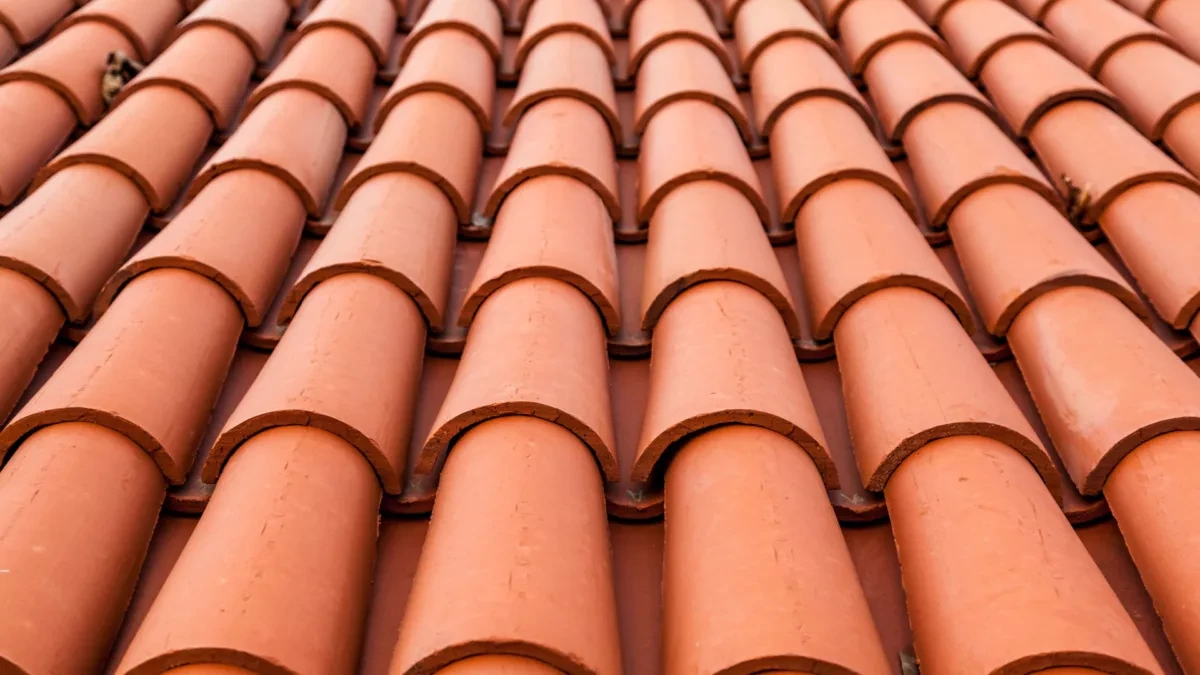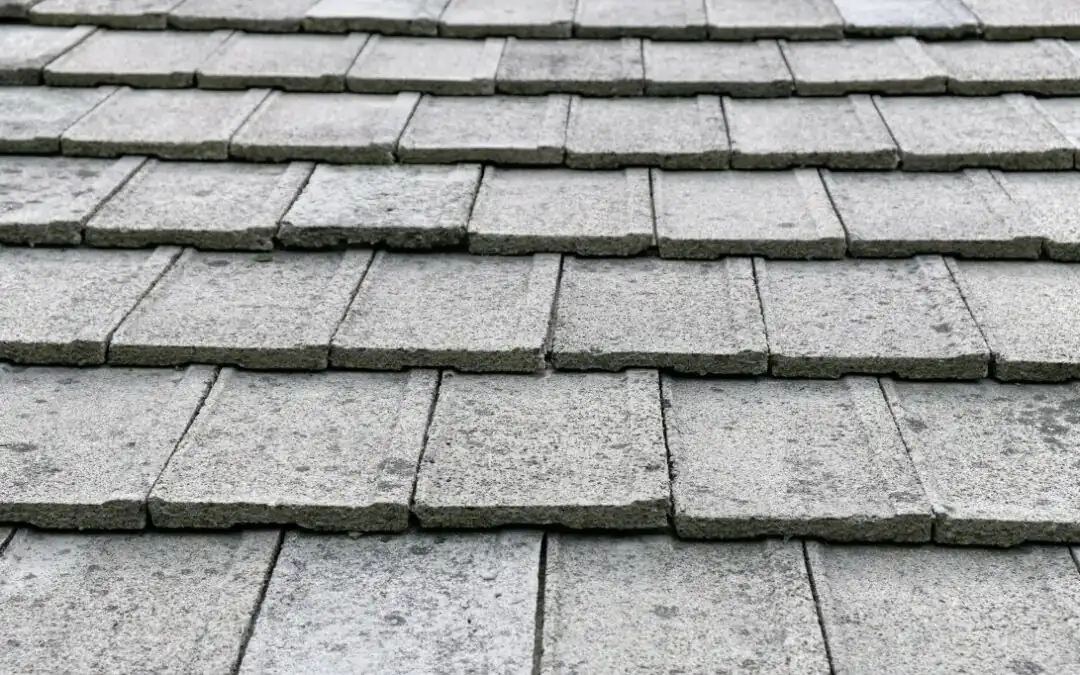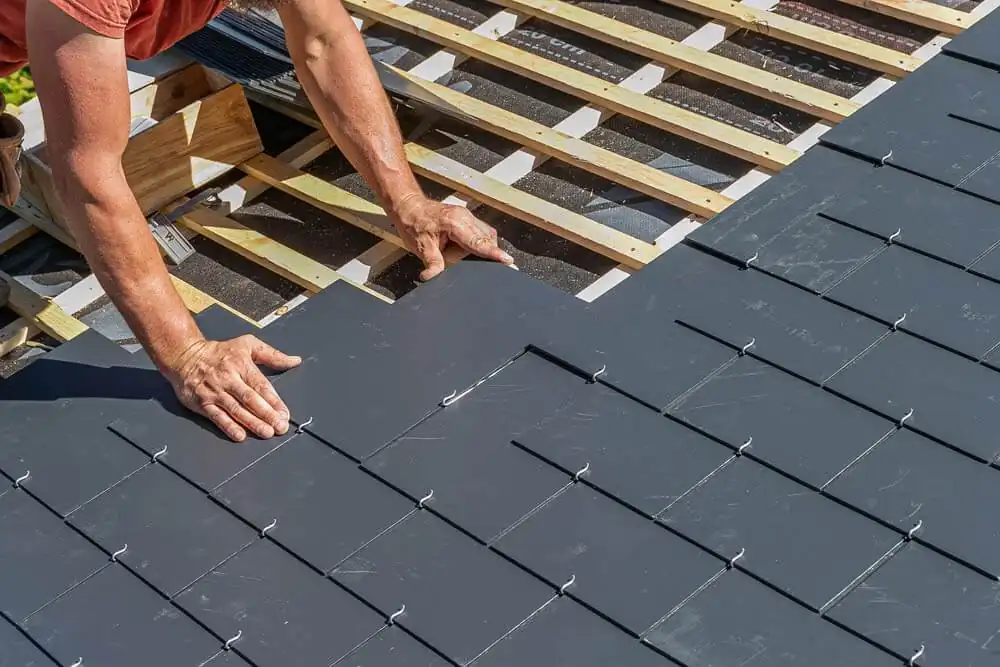Tile roofing is known for its durability, elegance, and timeless charm. But when it comes to choosing the right type of tile roofing material, many homeowners are surprised by the variety available. From traditional clay tiles to modern composite options, each material has its own benefits, limitations, and aesthetic appeal.
This guide covers all major tile roofing types to help you make an informed decision for your home or project.
1. Clay Tile Roofing
Clay tiles are among the oldest and most popular roofing materials in the world, particularly recognized for their earthy red tone and rounded shapes.
Key Benefits:
-
Extremely durable, with a lifespan of 50–100 years
-
Naturally resistant to fire, mold, and rot
-
Excellent thermal insulation in hot climates
-
Low maintenance
Drawbacks:
-
Heavy – may require structural reinforcement
-
Fragile during installation or impact
-
Higher material and labor costs
Best For:
Mediterranean, Spanish, and Southwestern-style homes, especially in hot and dry regions.

2. Concrete Tile Roofing
Made from a mixture of cement, sand, and water, concrete tiles offer a budget-friendly alternative to clay with similar performance.
Key Benefits:
-
Less expensive than clay
-
Available in many shapes and colors (can mimic wood or slate)
-
Fire and wind resistant
-
Long-lasting (30–50 years)
Drawbacks:
-
Also heavy
-
Susceptible to surface fading over time
-
May absorb more water, leading to potential mold in damp climates
Best For:
Homeowners wanting the look of premium tile at a lower price point.

3. Slate Tile Roofing
Slate roofing tiles are crafted from natural stone and provide unmatched elegance and durability.
Key Benefits:
-
Lifespan of 75 to 150+ years
-
Distinctive, upscale look
-
Natural, sustainable material
-
Fire and moisture resistant
Drawbacks:
-
Among the heaviest roofing options
-
Very expensive
-
Fragile and can crack if walked on
Best For:
Historic homes, luxury properties, or homes built to support extra roof weight.

4. Metal Tile Roofing (Profiled Metal Tiles)
These tiles are shaped metal panels made to look like clay or slate tiles, offering a lightweight and durable alternative.
Key Benefits:
-
Lightweight – reduces need for reinforcement
-
Long-lasting (40–70 years)
-
Resistant to weather, fire, and pests
-
Energy-efficient with reflective coatings
Drawbacks:
-
Less authentic appearance than real tile
-
Can be noisy in heavy rain or hail
-
Vulnerable to denting
Best For:
Modern homes or structures where weight is a concern.
5. Composite or Synthetic Tile Roofing
Composite tiles are made from engineered materials like plastic, rubber, or polymers to replicate traditional roofing styles.
Key Benefits:
-
Very lightweight
-
Impact resistant and flexible
-
Easier to install and maintain
-
Often made from recycled materials
Drawbacks:
-
Less proven lifespan (30–50 years)
-
May not be approved by historic districts or HOAs
-
Can be more expensive than expected for new materials
Best For:
Eco-conscious homeowners or properties with strict weight limits.
6. Solar Tile Roofing
An advanced option, solar tiles combine roofing material and photovoltaic technology to generate electricity.
Key Benefits:
-
Energy production without bulky panels
-
Modern, sleek appearance
-
Saves on utility bills over time
-
Incentives or rebates may be available
Drawbacks:
-
Extremely expensive
-
Installation is complex and limited to trained professionals
-
Less efficient than traditional solar panels
Best For:
Tech-forward homes, green builds, or those looking for long-term energy savings.
7. Terracotta Tile Roofing
Technically a type of clay tile, terracotta tiles are specifically known for their vibrant red color and weathered texture.
Key Benefits:
-
Naturally weather-resistant
-
Iconic Mediterranean appearance
-
Highly durable and fade-resistant
Drawbacks:
-
Same weight and cost concerns as regular clay tiles
-
Color options limited to earthy tones
Best For:
Southwestern, Spanish Colonial, or Tuscan-style homes.
8. Tile Profiles and Shapes
Aside from material, tile shape also affects the roof’s appearance and functionality.
Common Types:
-
Flat Tiles: Modern and minimal
-
Mission Tiles (Barrel): Classic curved shape, ideal for water runoff
-
Interlocking Tiles: Provide extra wind and water protection
-
S-Tiles: S-shaped wave design for strong visual texture
Choosing the right profile is essential for drainage, slope compatibility, and visual harmony.
9. Cost Comparison
Here’s a general cost breakdown (material only, per sq. ft.):
| Material | Approx. Cost |
|---|---|
| Clay | $10 – $18 |
| Concrete | $4 – $7 |
| Slate | $15 – $30 |
| Metal Tiles | $6 – $12 |
| Composite | $7 – $12 |
| Solar Tiles | $20 – $35 |
Labor and reinforcement may significantly increase the final installed price.
10. Weight and Structural Considerations
Tile roofing is heavy. Here’s an idea of weight per 100 sq. ft.:
-
Slate: 800–1,500 lbs
-
Clay: 600–1,000 lbs
-
Concrete: 500–900 lbs
-
Metal or Composite: 150–400 lbs
Homes with lightweight framing may need retrofitting to handle traditional tiles.
11. Weather and Climate Suitability
-
Clay & Terracotta: Best in hot, dry regions
-
Concrete: Performs well in mixed climates
-
Slate: Suitable for both cold and moderate areas
-
Metal: Great for snowy, windy, or humid zones
-
Composite: Good all-weather option, depending on brand
-
Solar Tiles: Most effective in sunny climates
Your climate should play a major role in the decision.
12. Appearance and Style Compatibility
Choose a tile that enhances your home’s style:
-
Clay/Terracotta: Spanish, Mediterranean, Colonial
-
Slate: Victorian, European, upscale modern
-
Concrete or Composite: Versatile
-
Metal Tiles: Modern or rustic farmhouses
-
Solar Tiles: Contemporary, minimalist homes
Color, shape, and texture all contribute to curb appeal and property value.
13. Maintenance and Longevity
Tile roofs generally offer excellent longevity:
-
Clay/Slate: 50–100+ years
-
Concrete: 30–50 years
-
Metal/Composite: 40–70 years
-
Solar Tiles: 25–30 years
Maintenance needs are typically low but include occasional inspections for cracks, displacement, or underlayment issues.
14. Environmental Considerations
-
Clay/Slate: 100% natural, recyclable
-
Concrete: More carbon-intensive but long-lasting
-
Composite: Often made from recycled materials
-
Metal: Recyclable and energy-efficient
-
Solar Tiles: Generate clean energy
For green building goals, solar, composite, and metal tiles are top picks.
15. Summary Table: Pros and Cons of Each Tile Type
| Tile Type | Lifespan | Cost | Weight | Look | Best Use |
|---|---|---|---|---|---|
| Clay | 50–100 yrs | $$$$ | Heavy | Classic | Hot, dry climates |
| Concrete | 30–50 yrs | $$ | Heavy | Versatile | Mixed climates |
| Slate | 75–150 yrs | $$$$+ | Very Heavy | Luxury | Historic or high-end homes |
| Metal Tile | 40–70 yrs | $$$ | Light | Modern | Snow, wind-prone areas |
| Composite | 30–50 yrs | $$$ | Light | Flexible | Eco-conscious projects |
| Solar Tile | 25–30 yrs | $$$$$ | Moderate | Sleek | Sunny, high-tech homes |
Still Not Sure Which Tile Is Right for You? Let’s Talk
Choosing the perfect tile roofing material depends on your home’s structure, your climate, and your aesthetic goals. At Advanced Driveway Solutions, we’re here to help you weigh your options and find the best fit—whether it’s traditional clay, modern metal, or eco-friendly composite tiles. Contact our team today for expert advice and a free estimate on your roofing project.
